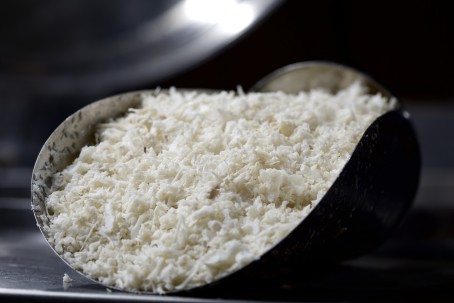
Features
Research
Norwegian phosphorus research could benefit fry and smolt production
July 7, 2014 By Matt Jones
 Fish bones are full of valuable phosphorus that the aquaculture industry can exploit better The Norwegian research institute Nofima has been developing biotechnology solutions that can make the nutrients in herring waste more readily available for salmon
Fish bones are full of valuable phosphorus that the aquaculture industry can exploit better The Norwegian research institute Nofima has been developing biotechnology solutions that can make the nutrients in herring waste more readily available for salmonSenior researcher Sissel Albrektsen and her colleagues at Nofima in Norway have been working on a project financed by the Norwegian Seafood Research Fund (FHF). During the course of their research they have managed to collect a significant fraction of the phosphorus present in herring filleting waste.
“It’s difficult to obtain the phosphorus present in herring filleting waste, which has a lower content of bone than other raw materials that we have experience using,” says Albrektsen. “But we managed it after careful adaptation of a method we use for other marine raw materials to process and acid treat filleting waste. Our results show that herring filleting waste may be a significant source of phosphorus with this technology.”
Best for fry and smolt
“We have shown that salmon fry during start-up feeding and salmon smolt after release to sea [cages] can both take up and use the phosphorus extremely well,” says Albrektsen. “The results suggest, however, that salmon fry are slightly more sensitive than salmon smolt with respect to the neutralising agent that is used as a buffer during production. We need to examine this more closely, and it will be important in whether commercial production can be successful.”
“Our experiments have also shown that the skeleton develops normally when the fish obtain sufficient phosphorus from the diet, and this is very important to avoid deformities in farmed salmon,” she adds.
Environmental and financial benefits
Phosphorus is a limited resource and Albrektsen points out that we will have to find more efficient ways of using the resources we have. “We have shown that upgrading raw bone material, which has sometimes been seen as hazardous waste from the production of fishmeal, has a large potential and may be enormously beneficial as an ingredient in feed. There are indications that fish bone hydrolysate has further positive properties, such as an ability to improve the digestibility of several other nutrients and to give improved growth. We plan to continue to work on this in order to understand fully the potential of the new ingredients.”
The method is not yet ready for industrial use, but Nofima is involved in the Forny project, with the goal of commercialising the new technology.
— Siri Elise Dybdal
Print this page





